Caulk, wood filler and spackle are not all the same, but they each have great uses. Here's when to use each one!
You're filling a hole or a gap and you don't know what to use to do it. Should you use caulk or wood filler or spackle?
It's a good question to ask. Sure, they might all get the job done for awhile, but each of these patches has a special purpose and a best place to use them.
In short, use caulk for corners and edges, use wood filler for flat surfaces, and use spackle for drywall. Let's dive into it.
Note that this post refers mostly to when to use these products in a molding project. Wood filler is always what you should use when filling holes, cracks or joints in woodworking projects.
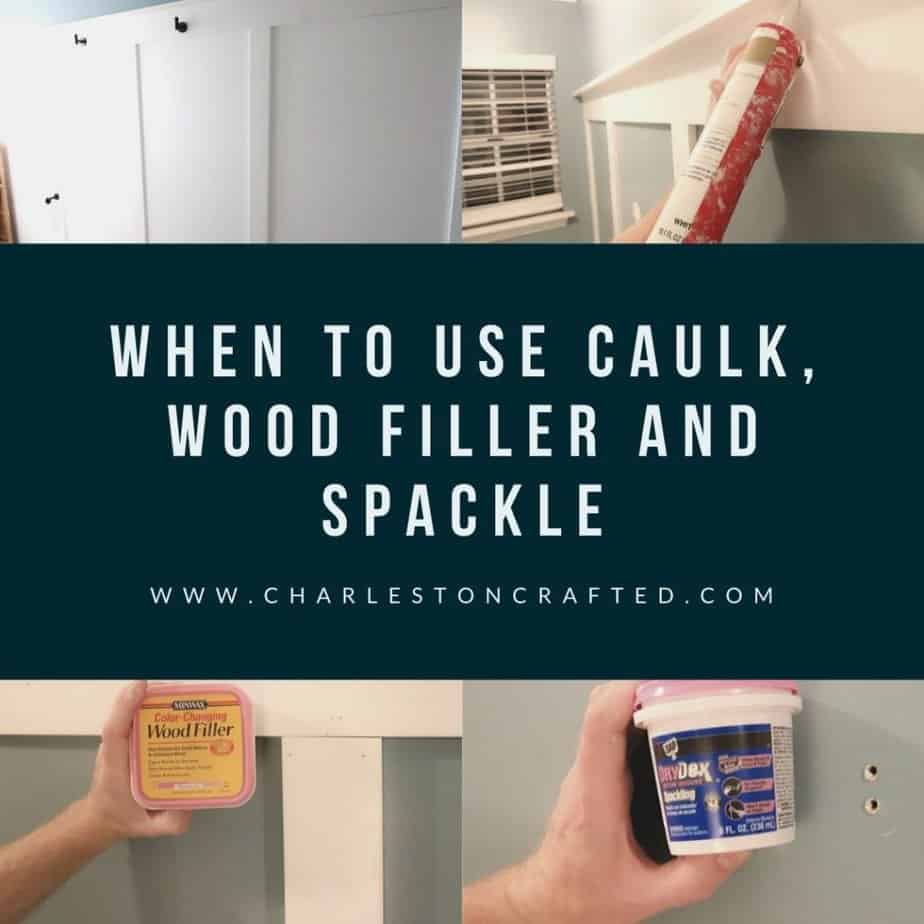
Free printable project planner
Need help getting organized? Our free printable DIY project planner will help you get it all organized and planned on one page!
When should I use caulk?
Caulk should be used when doing projects like installing crown molding. Installing crown molding will leave you with corners and gaps that need to be filled.
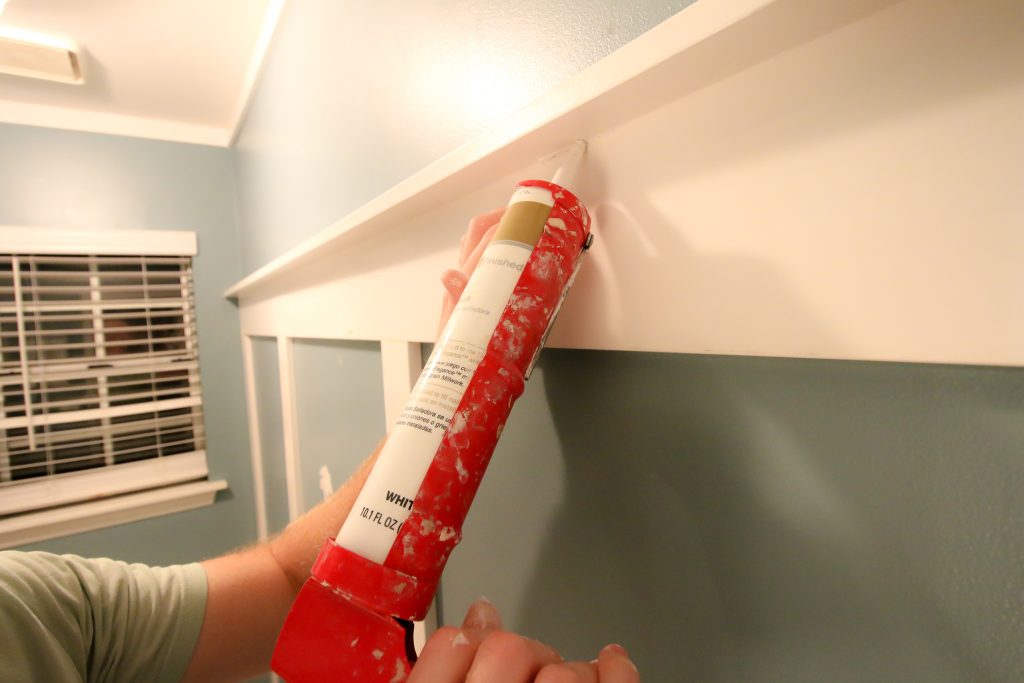
Use caulk when filling in corners where two pieces of molding come together. Squirt caulk into the gap with a caulk gun, then smooth the caulk with your finger or a damp rag.
Also use caulk to fill the gap between your molding and the ceiling or the wall. No matter how good of a job you do at installing the molding, you'll have small gaps that need to be filled. Again, use a caulk gun to squirt caulk in the gap, then smooth with your finger or a wet rag.
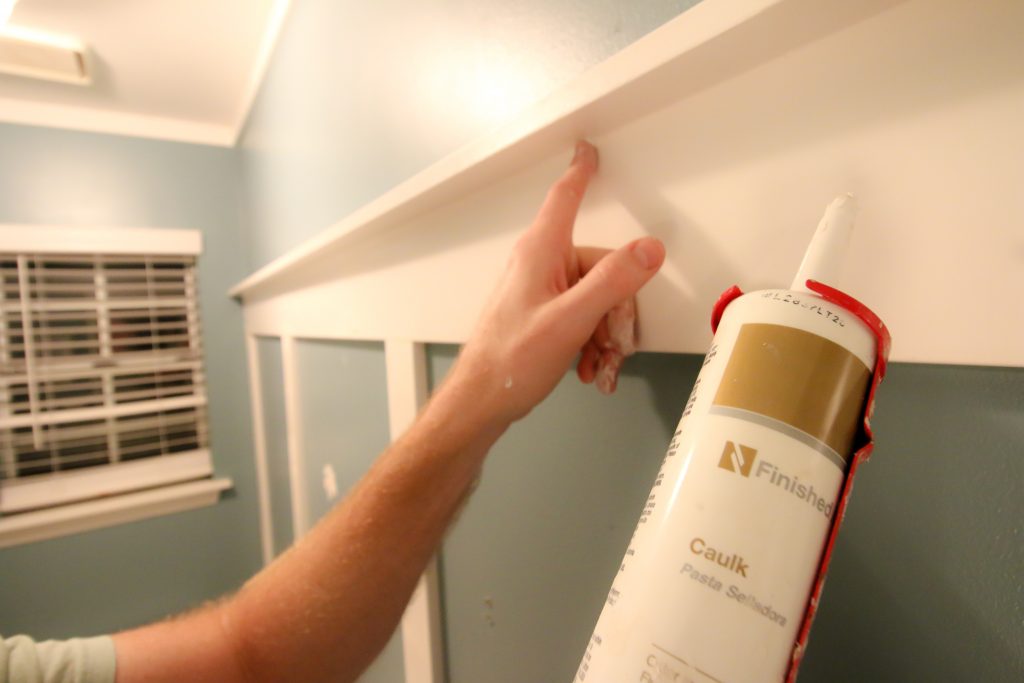
When should I use wood filler?
Use wood filler to patch flat cracks or gaps in molding or small holes in wood projects from nails or cracks. The wood filler does a better job of smoothing flush because it is made to fill in flat gaps and joints on wood.
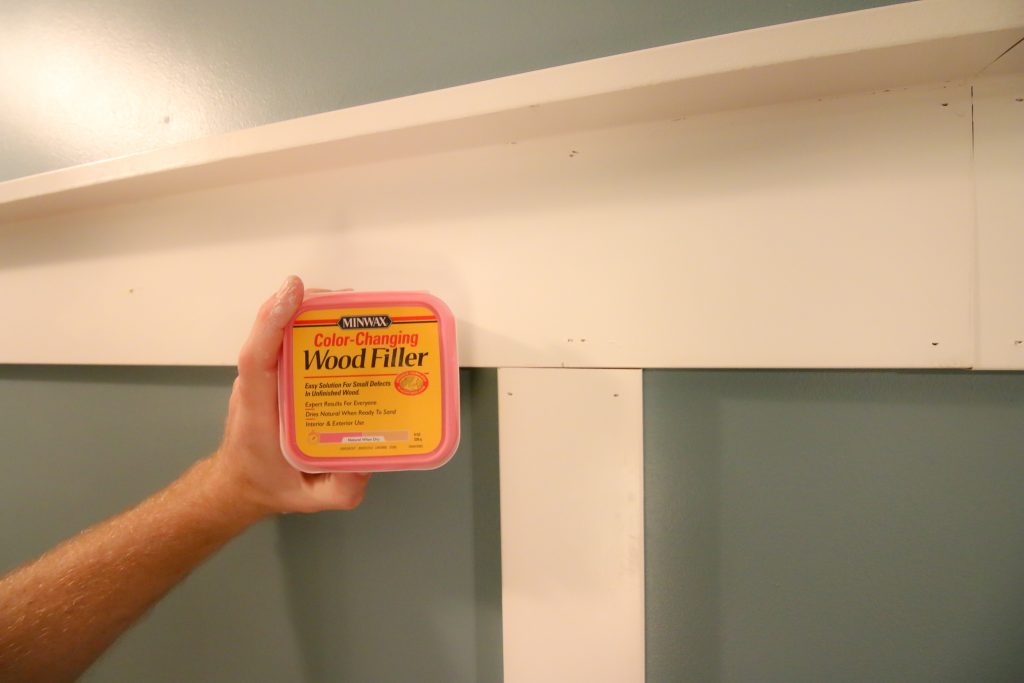
Break off a little bit of wood filler and spread it generously in the crack of the molding. Rub the wood filler into the crack as best you can.
Then, take a wet rag and wipe off the excess. Once dry, it's easy to give the crack a quick sand and then paint over it.
See our favorite brands of wood filler compared side by side!
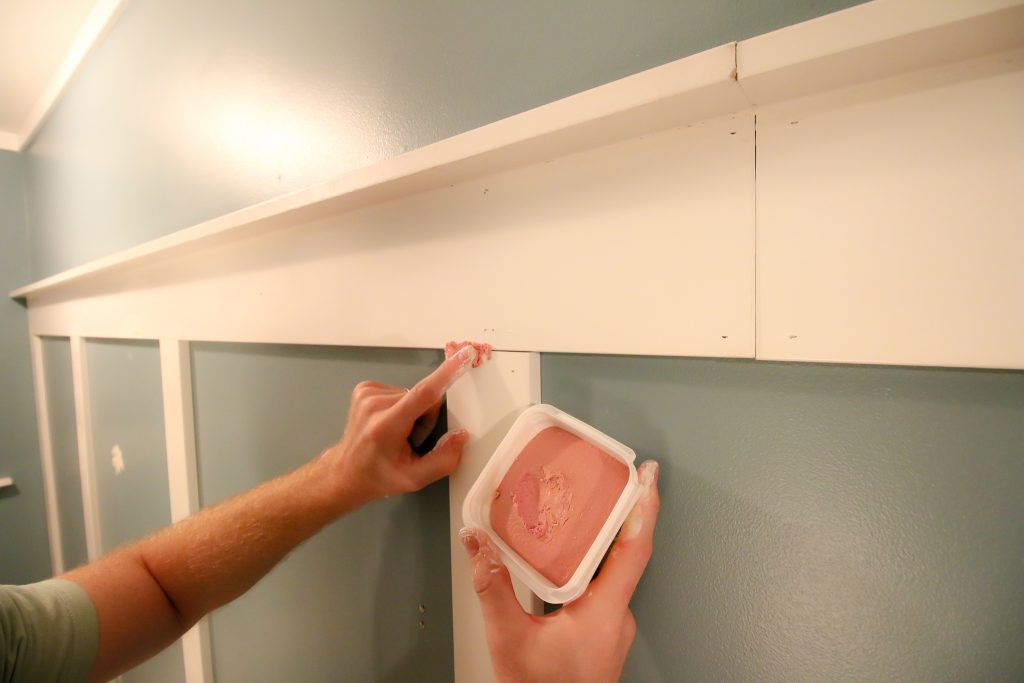
When should I use spackle?
Spackle is used to fill holes in drywall made from screws or nails. Spackle forms to the best consistency and sands down best to match drywall and fill holes evenly.
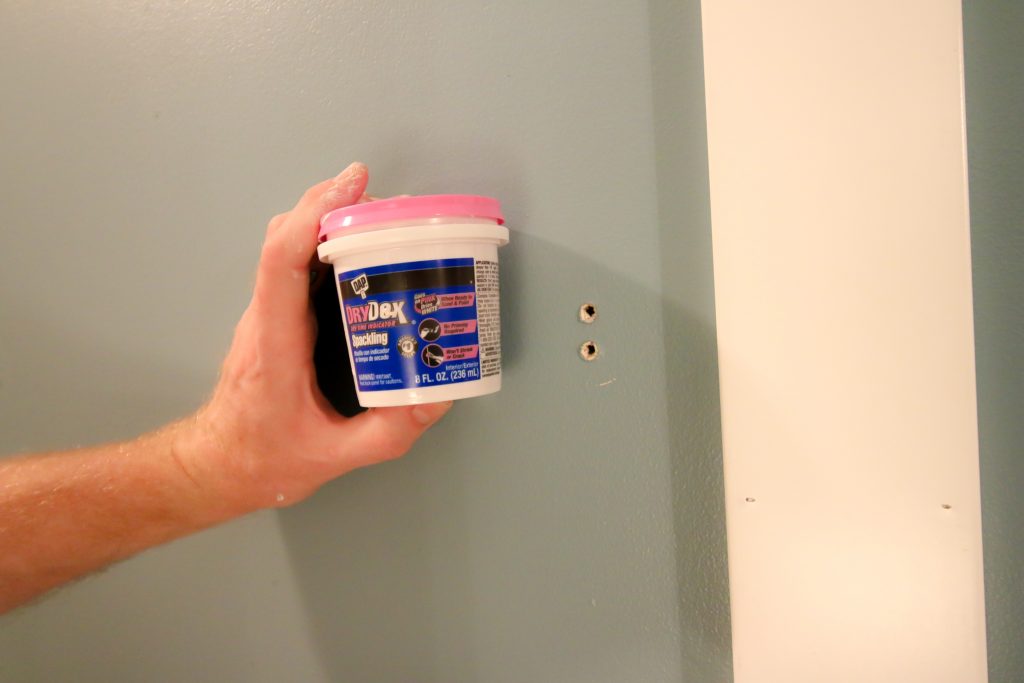
Simply pull out a chunk of spackle and work it into the hole. Fill the hole with spackle as much as you can, then make sure to spread some generously on the outside of the hole.
Once dry, sand the spackle completely smooth and paint.
Knowing the best ways to use caulk, wood filler and spackle is crucial for your next project and filling your holes!
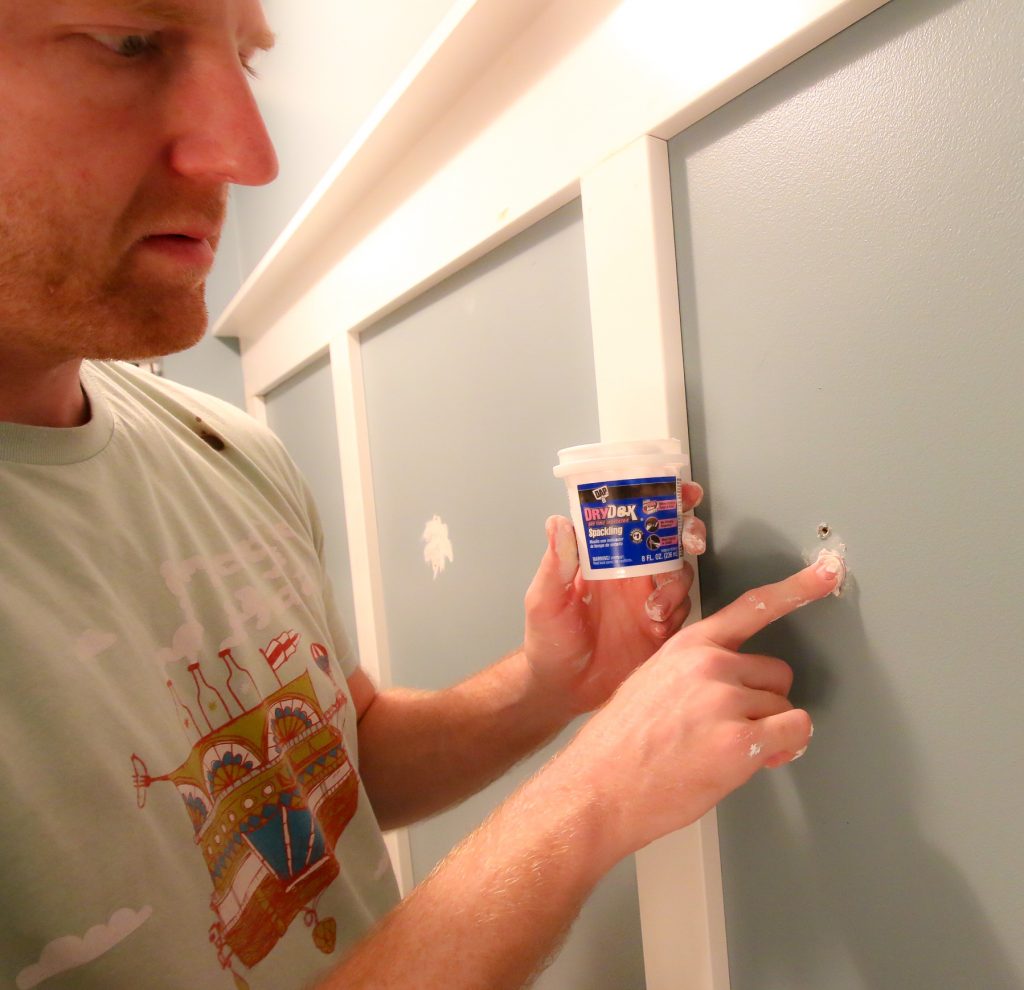
Wood filler vs caulk
Wood filler should be used for gaps or cracks that you want to sand perfectly smooth and then paint or stain.
Caulk should be used in corners or seams that need a little flexibility as the boards might shift over time. You do not typically sand or paint over caulk.
Do you use caulk or wood filler for miter joints?
Usually the goal of a miter joint is to make 2 pieces of wood look like one. For this reason, you will want to use wood filler, sand smooth, and then stain or paint as if it was one piece.
Wood filler vs spackle
Spackle is used to fill and repair holes in drywall. It is then sanded smooth and painted.
Wood filler should be used for gaps or cracks in wood or molding that you want to sand perfectly smooth and then paint or stain.
Do you use spackle or wood filler for baseboards?
Spackle is designed to stick to drywall and wood filler is designed to stick to wood. Since most trim and baseboards are wood, you will want to use wood filler on them.
Can you use wood filler on drywall?
Wood filler is formulated to fill and stick to wood, not drywall. In a pinch, a tiny bit of wood filler in a small drywall hole won't hurt you, but I'd only use it in a small instance like that.
Spackle vs caulk
Spackle is used to fill and repair holes in flat surfaces of drywall. It is then sanded smooth and painted.
Caulk should be used in corners or seams that need a little flexibility as the boards or walls might shift over time. You do not typically sand or paint over caulk.
Any more questions about wood filler vs spackle vs caulk?!
Looking for something?
We've been doing this since 2012 so we have a LOT of blog posts!
Search stuff like: Ceiling Projects | DIY Plant Stands | Thrift Flips


Hey there, I'm Sean, the woodworking enthusiast and builder behind CharlestonCrafted.com! Since 2012, I've been sharing the magic of turning raw materials into beautiful creations. I love teaching others the art and satisfaction of woodworking and DIY. I try to inspire fellow crafters to make something extraordinary out of nothing at all.


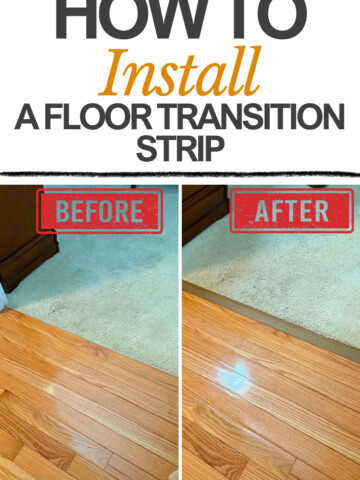
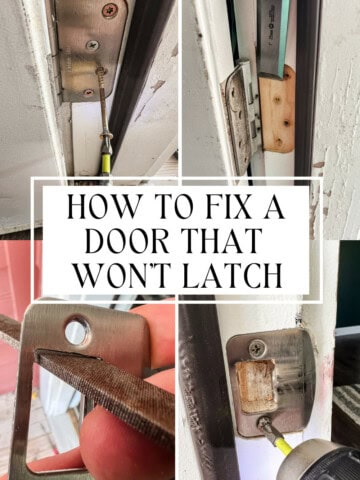
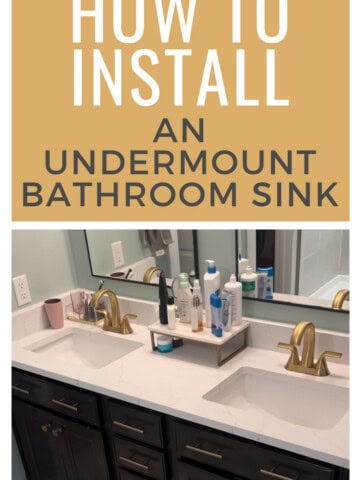
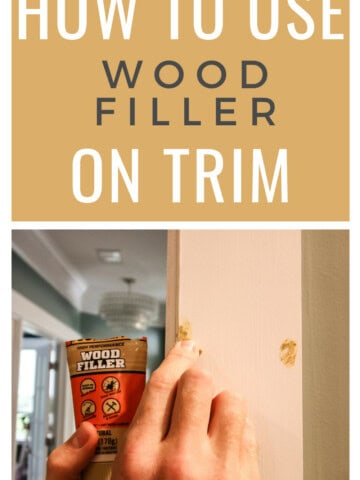
Ivory says
WOW, this is an excellent post. I was NEVER sure which of the three to use for what??? Thanks to this wonderful post, I now know. Thank you, thank you & thank you!
Sean says
Glad you found it helpful!
Jeanne Potter says
So which would I use to fill hard wood flooring gaps in my bedroom? Some are small, some up to 1/4 inch. The flooring is white pine. HELP!
Morgan says
Hey Jeanne, with smaller gaps, you should be able to use wood filler and then sand and stain to match. For the bigger gaps, you might need to put a thin strip of wood in the gap, then wood filler over/around it.
Charlene says
Hello, I was wondering if I can use wood filling to patch medium holes at the bottom of my kitchen cabinets. Termites came through my tiles and began eating the borders. I would like to patch the holes but not sure which to use.(wood filler, sparkling or???
Charlene
Morgan says
As long as you're not talking something the size of like a quarter then you should be able to use it. Wood filler can be used to patch and sand smooth any wood surface. You should be able to fill them, sand, then paint or stain over it. Good luck!